This simple tutorial will teach you How to Make the Best Homemade Lemon Curd. Learn how to achieve the perfect balance of sweetness and tartness for your favorite lemon treats.
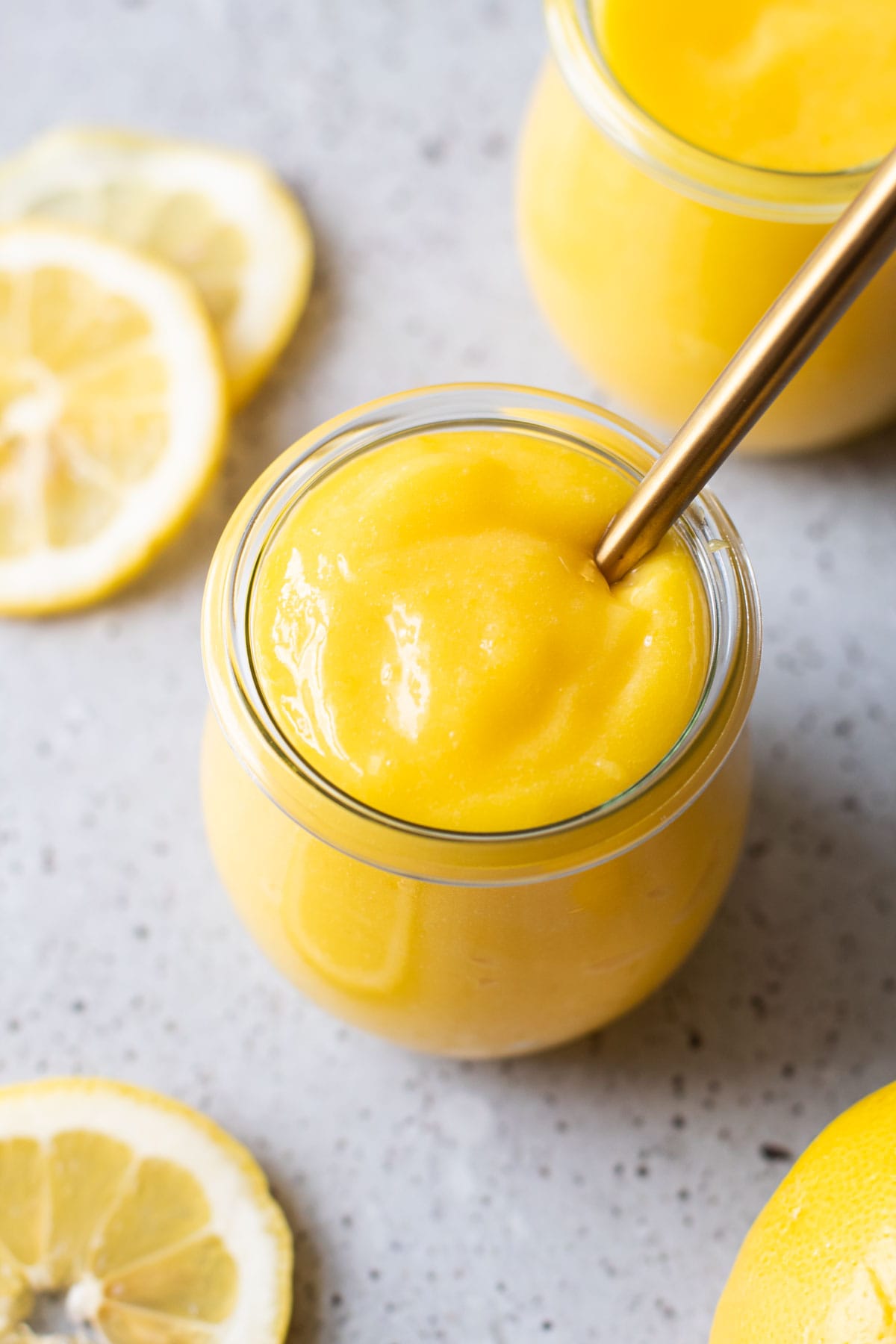
Want to save this recipe?
Enter your email & I'll send it to your inbox. Plus, get weekly updates from me!
Lemon curd is one of those recipes that you assume is too fancy to make at home, but in reality, it's quite simple to do (see also: Perfect Panna Cotta). Homemade lemon curd is significantly more vibrant, fresher, and well-balanced than any store-bought brand (and also much less expensive). And, it is highly likely you already have all the necessary ingredients to whip it up quickly.
From using it as a pie filling (hello: Creamy No-Bake Lemon Pie) to spreading it on toast, using it as a filling in cookies, or swirling it into yogurt, there's no shortage of delicious ways to use this bright citrus spread.
Making curd isn't difficult, but it is a process that should be followed closely. Below, you'll find a step-by-step guide on How to Make Lemon Curd perfect the first time. You can also skip to the bottom of the post to grab the recipe.
Jump to:
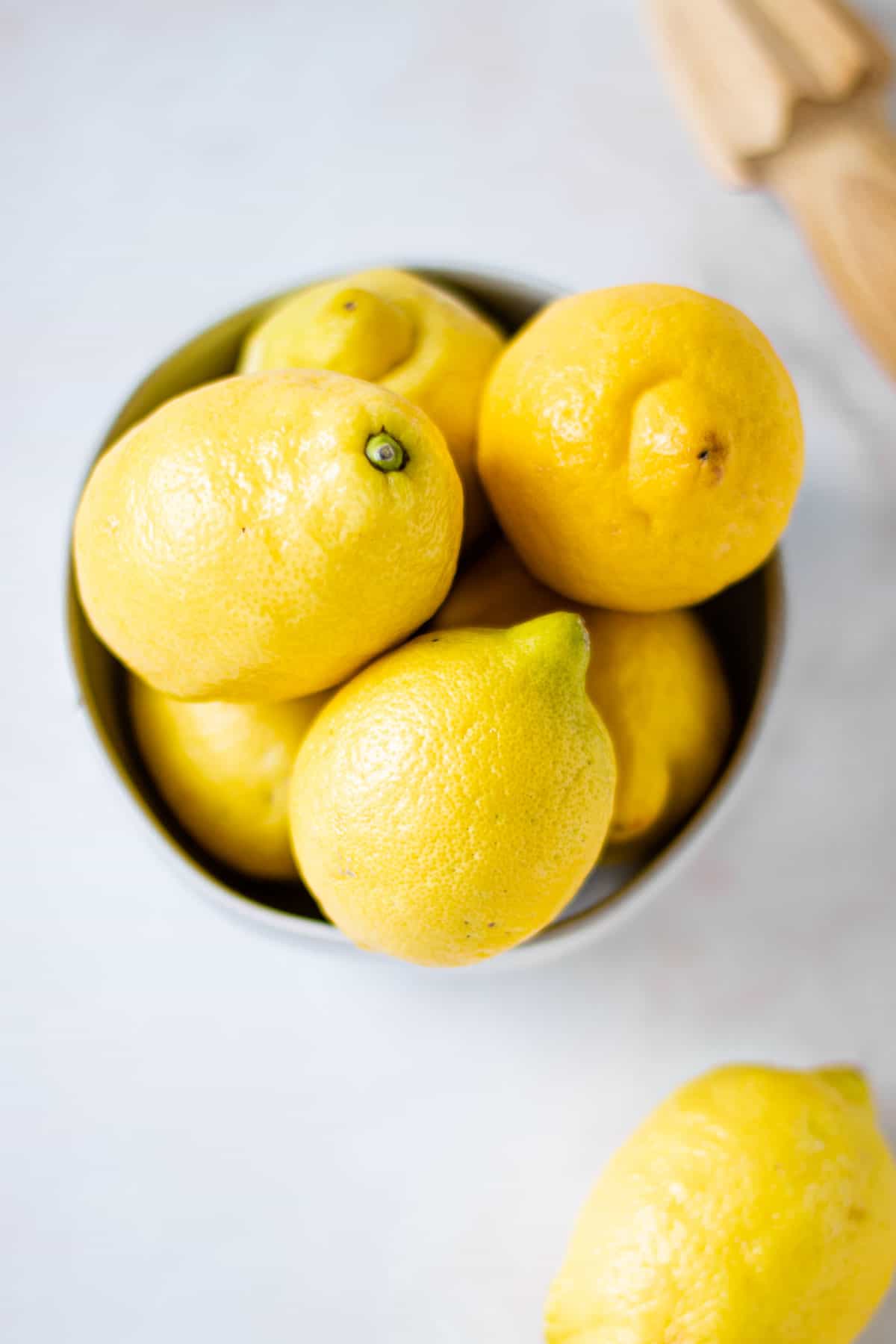
Here is What You Need to Make It
Here is an overview of the ingredients needed for this recipe. The full recipe is listed below in greater detail.
- egg yolks
- granulated sugar
- freshly squeezed lemon juice and zest
- salt
- unsalted butter
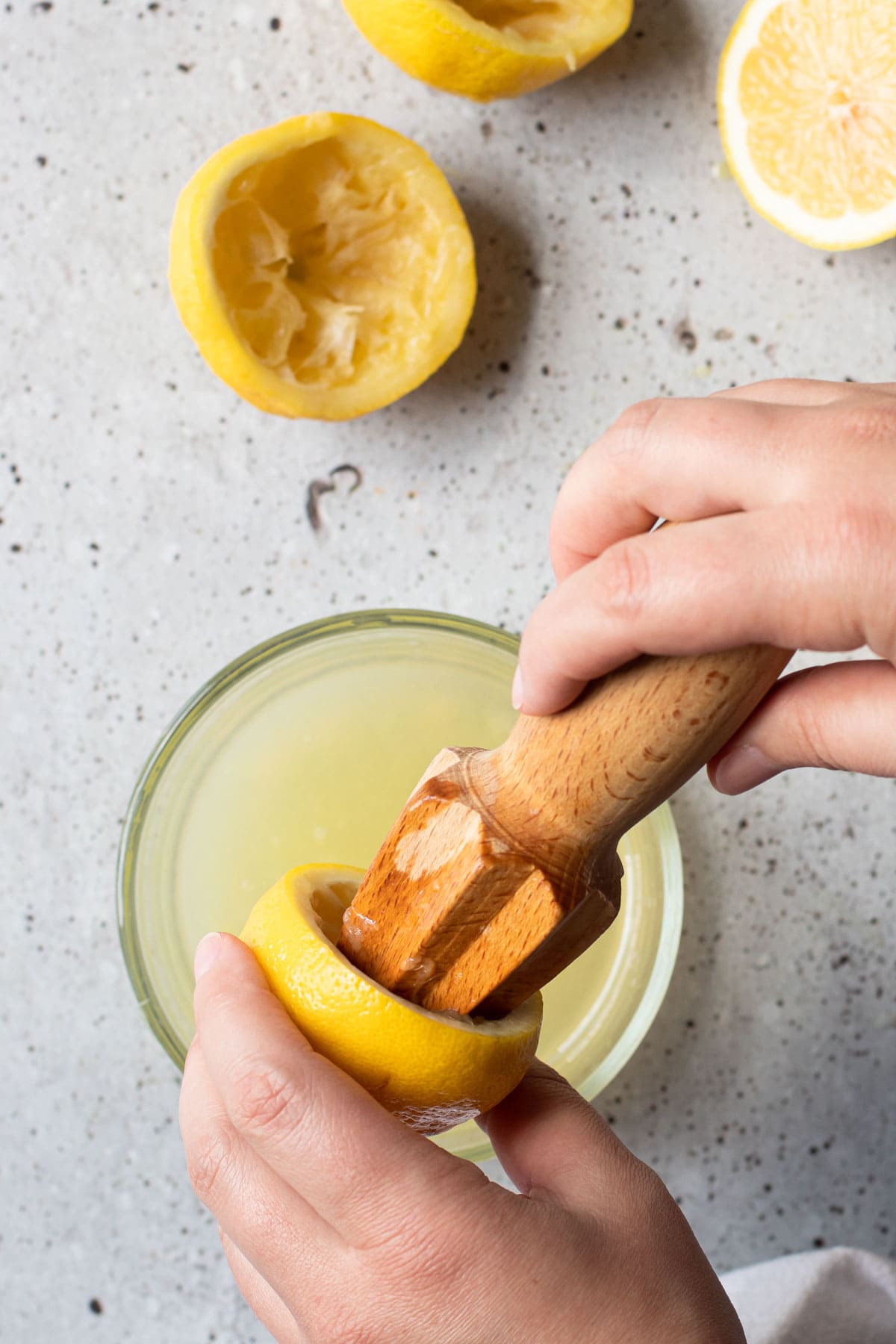
How to Make It
Lemon curd is cooked low and slow on the stovetop in a double-boiler. Since most people don't keep an actual double boiler in their homes, (including me), a "makeshift" double boiler will do just fine. To set up a double-boiler, you'll need a small pot of water and a large heat-proof bowl that will fit over the top of the pot. A small pot works best because it only heats the bottom of the bowl and not the sides, which I find useful for preventing any crystallized sugar. Use a stainless steel metal bowl or a heatproof glass bowl. And make sure the bowl doesn't touch the water in the pot.
The whole mixture shouldn't take more than 10 minutes to make on the stove, often a few minutes less than that.
The curd needs to be cooked to a temperature between 170ºF-180ºF. It's easiest to measure this with an instant-read thermometer, and I swear by my Thermapen.
If you don't have a thermometer, you can use the spoon test to check whether the curd is thickened correctly. To do this, coat the back of a wooden spoon with the mixture and run your finger through it. If the curd holds the line, it means it is thickened correctly. However, if it does not, continue to cook the curd for another minute or two until it thickens properly.
Step-by-Step Visual Overview
Here is a quick overview of the steps needed to make lemon curd. This is not the actual recipe, which is located at the end of this article and has much greater detail to ensure success.
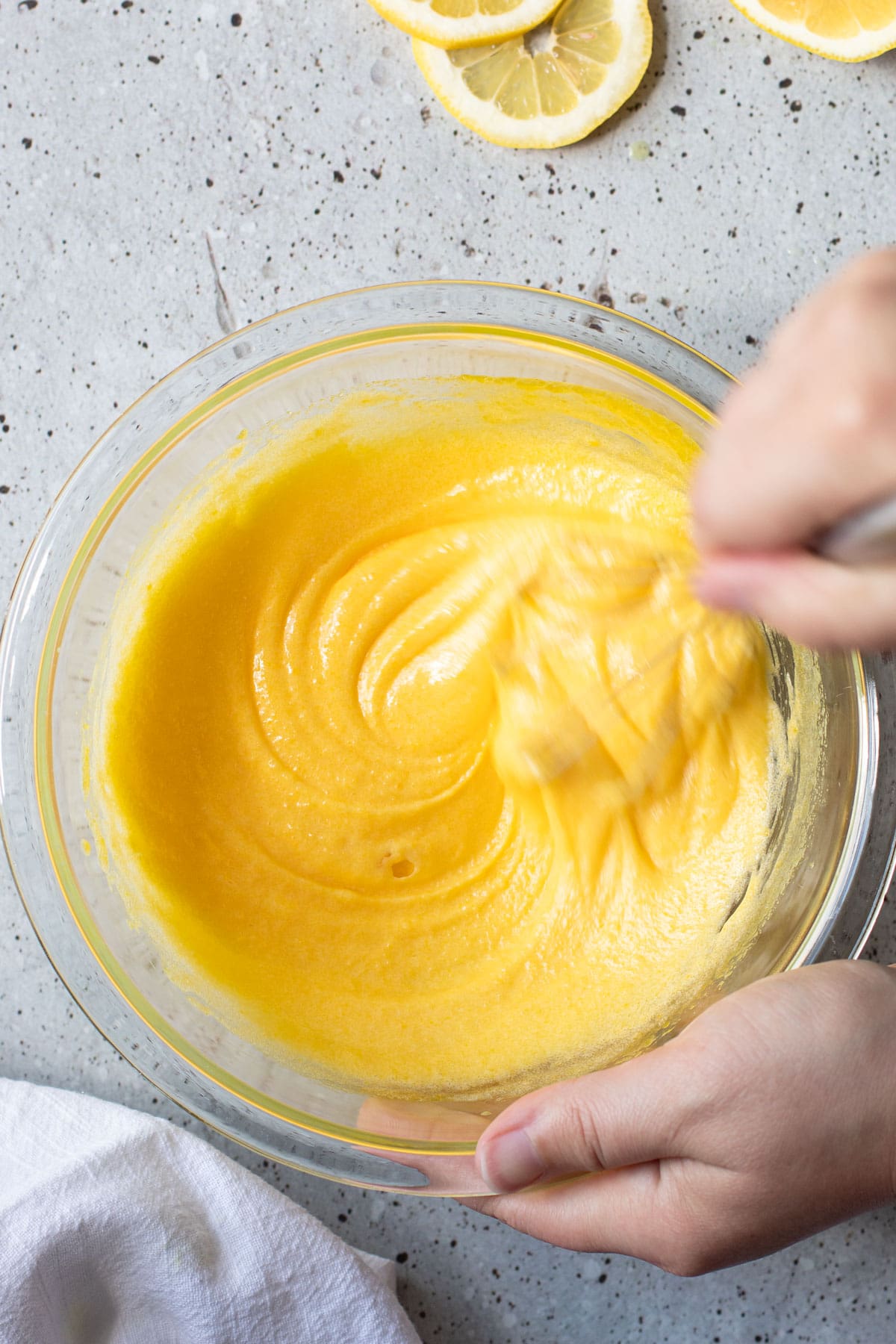
Step 1: Whip up the eggs and sugar until lightened in color.

Step 2: Add in the remaining ingredients and cook over a double boiler, until thickened.
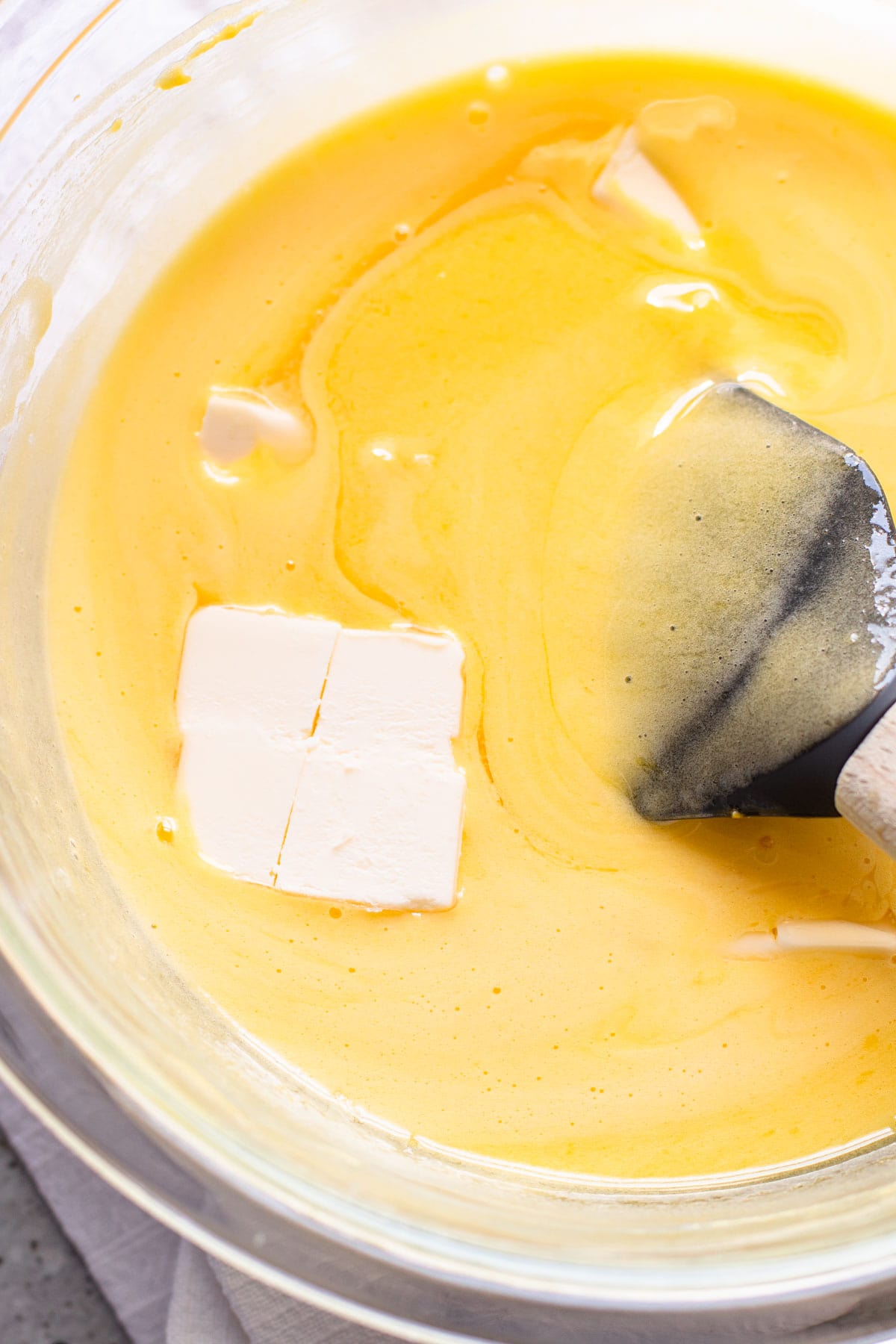
Step 3: Take the thickened curd off the heat, and stir in the butter.

Step 4: Give a quick whisk to ensure it is emulsified.
While it is hot, the lemon curd will still be thin. You might feel at this point that it isn't the correct thickness, but rest assured, it will thicken much more as it cools in the next 24 hours. Your best bet for making sure the curd is thickened correctly is to probe the temperature as instructed above.
Tips for Success
- The biggest piece of advice when you are cooking the mixture is to never stop stirring. This is not a recipe to walk away from, even briefly. Egg yolks are naturally attracted to heat, and if they sit for too long without stirring they will migrate to the bottom or sides of the pot, where it is the hottest, and they will overcook. This can result in pieces of cooked egg yolk in your mixture. While you can strain them out, it also can result in a more pronounced eggy flavor in your final lemon curd.
- Only use stainless steel cooking equipment, or better yet, use silicone. If the acidic mixture becomes exposed to metal, it can react and cause a metallic taste.
- Cook the curd to a temperature between 170ºF-180ºF. This temperature thickens it just enough to make it safe to eat and super creamy. Cooking it any longer will result in a curd that is not silky smooth and may be a bit lumpy.
- Don't rush the process. The recipe calls for medium heat, and it shouldn't be increased to make the curd cook faster. A slower coagulation of the eggs creates a smoother and creamier curd with a better flavor.
Troubleshooting Lemon Curd
When I say this recipe is easy, I truly mean it. But that doesn't mean there aren't a few things that can trip people up.
The most common reason this may have occurred is that the curd wasn't cooked long enough. The egg yolks must reach a temperature between 170ºF and 180ºF in order for the yolks to change their structure and for the curd to thicken. Also, be aware that the lemon curd continues to thicken as it cools. Warm curd will be much thinner than the cooled final product.
This likely means that the egg yolks cooked too much. This can happen for two reasons. Either the mixture wasn't constantly stirred and the egg yolks got cooked on the bottom of the pot. Or, the entire mixture was cooked too much and reached close to the boiling point. You can try to strain it out, but it might have an eggy aftertaste.
Double-check that you measured the correct ingredients. This recipe should make for a slightly sweet lemon curd, with an option listed in the notes to make a more sweet-tart curd. If you measured correctly according to the instructions and still feel it is too sour, you can add about ¼ cup more sugar next time you make it.
Lemon juice is very acidic. Use only stainless steel or enameled pans and utensils when making this mixture, especially when it comes to the pots and whisks you use. If you use an unlined metal or copper material, it will react with the acid and can result in a metal taste in the lemon curd or even it can turn green.
For a completely smooth lemon curd, strain your lemon curd after it has finished cooking on the stove. This will remove the bits of zest in the curd, as well as any accidentally cooked egg yolks.
First off, did you know you can freeze egg whites? Whenever I make lemon curd, if I don't have an immediate use for the egg whites I'll stick them in the freezer. When I'm making a big batch of eggs or a frittata, I'll defrost the egg whites the night before and add them to that. You can also make a meringue to serve with your lemon curd or use them in another recipe such as a souffle, angel food cake, cocktails or any other number of recipes.
How to Use It
After cooking, the curd needs about 3 hours to chill and finish setting up. However, if you want to eat it warm, go for it! Do note that the curd will taste sweeter when served warm vs. chilled.
- Use it as a topping: on waffles or pancakes, over a scone or a muffin, with ice cream (would be great with this Vanilla Bean Ice Cream or Blueberry Ice Cream) or yogurt, or spooned over a cheesecake (see this Strawberry Cream Cheese Pie or Blueberry Cream Cheese Pie).
- Many recipes (including this Icebox Lemon Pie) call for lemon curd!
- Use it as a filling: all by itself, lemon curd makes a great filling in cakes, pies, cookies, crepes or other pastries.
- Just grab a spoon! Seriously it's so good.
How to Store Lemon Curd
Store lemon curd in the refrigerator, in a glass jar, or glass container for up to two weeks. Do not store it in a metal or plastic container as the high acidity can break down those materials.
Lemon curd can also be frozen for up to 3 months.
More Citrus Recipes
- How to Zest a Lemon and Other Citrus
- Lemon Drop Cookies
- Lemon Meringue Pie
- Lemon Custard Pie
- No Bake Orange Creamsicle Pie
- Coconut Lime Tart
More Tutorials
I am so honored when you make a recipe from my site! If you make this Homemade Lemon Curd, please leave a star ⭐️⭐️⭐️⭐️⭐️ rating with your experience! If you have any questions about this recipe, feel free to comment here, and tag me on Instagram!
PrintFull Recipe
How to Make Lemon Curd
Managing the perfect balance between sweet and tart, this homemade Lemon Curd is a bright citrus spread that is perfect to use in a variety of desserts. It's simple and quick to make on the stove, requiring just a handful of ingredients and about 10 minutes of your time.
- Prep Time: 00:05
- Cook Time: 00:10
- Total Time: 15 minutes
- Yield: 1 Pint
- Category: Tutorial
- Method: Stovetop
Ingredients
- 1 tablespoon very finely grated lemon zest
- 6 large egg yolks
- ¾ cup (150 grams) granulated sugar (see notes)
- ½ cup (112 grams) fresh-squeezed lemon juice (from about 3-4 large lemons)
- Pinch coarse kosher salt
- 8 tablespoons (113 grams) cold unsalted butter, diced into pieces
Instructions
- Bring a small saucepan of water to a simmer over medium heat on the stove, which will act as a double-boiler.
- Add the egg yolks and sugar to a medium heat-proof bowl. Vigorously whisk the yolks into the sugar until the mixture is lightened in color and increased in volume, about TK time. Whisk in the lemon zest, lemon juice, and salt.
- Set the bowl over the simmering saucepan (but don’t let it touch the water).
- While stirring constantly with a rubber spatula, cook the mixture for 8-10 minutes, until the mixture has just thickened and reached a temperature between 170ºF-180ºF. To double-check that the curd has thickened properly, take a wooden spoon and coat it with the curd. Draw a horizontal line on the back of the spoon with your finger. If the line “holds” then your curd is set. If the line collapses right away, the curd needs to cook for another minute or so. However, do not bring the mixture to a boil, this will overcook it.
- Take the curd off the heat. If desired, to make it completely smooth, pour the hot curd through a fine-mesh strainer into another bowl. This is entirely optional.
- Whisk the cold butter into the curd, a few pieces at a time, until it is fully emulsified.
- Transfer the curd to a jar and let cool completely before covering and refrigerating.
Notes
To make a slightly less sweet, more equally tart curd, reduce the amount of sugar to ½ cup.
Make sure to only use stainless steel or lined metal pots or utensils. If you don't know if your whisk is stainless steel, make sure to only use it briefly when whisking together the ingredients. Use a rubber spatula when stirring the pot to prevent any prolonged contact with unlined metal.
Some of the links on this page may be affiliate links. Everyday Pie is a participant in the Amazon Associates Program. As an Amazon Associate I earn from qualifying purchases, at no extra cost to you.


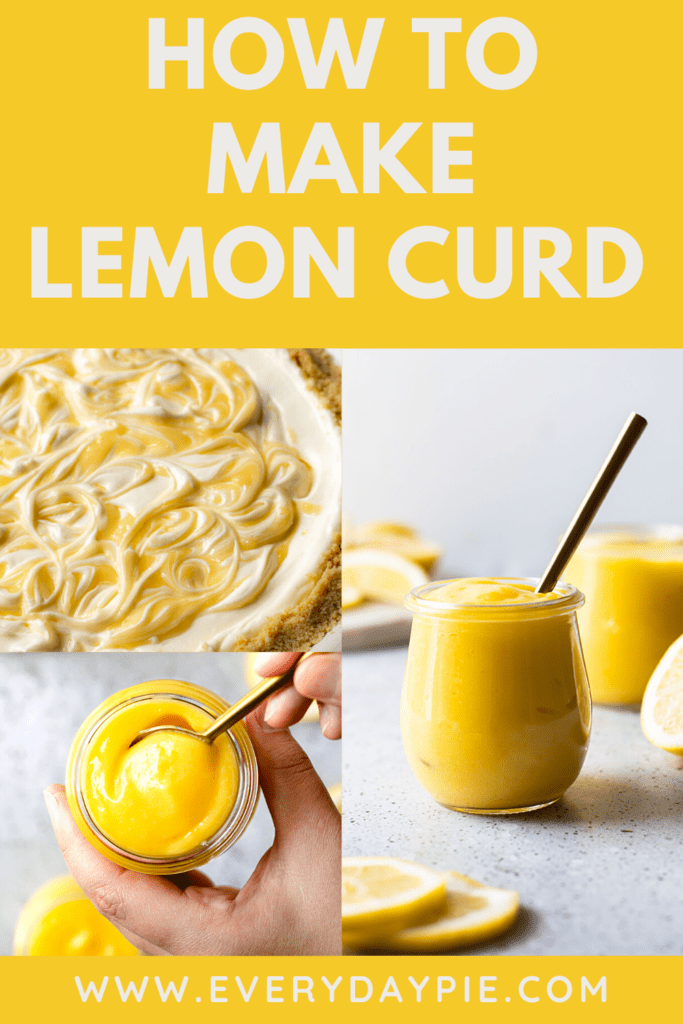

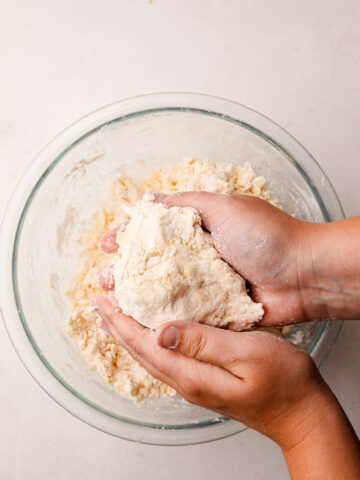

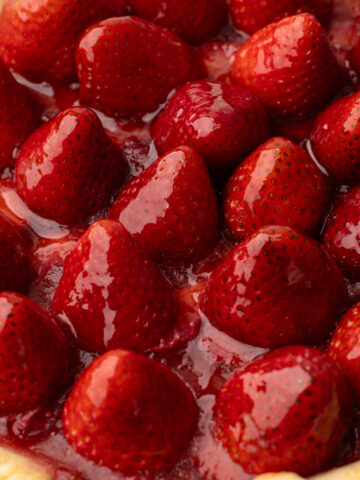
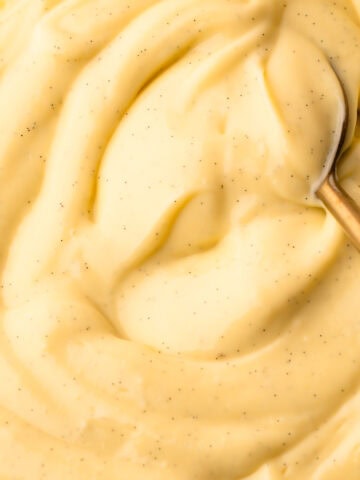
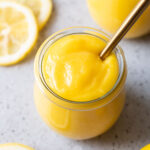
Leave a Reply